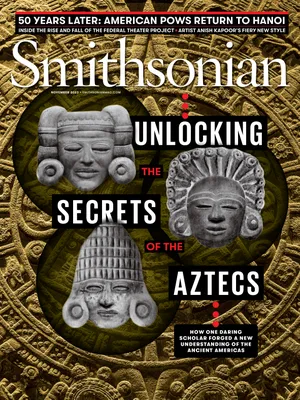These Portraits Made a Bold Statement in 19th-Century America
A new exhibition exploring artistic representation of Black subjects includes a work that subverted cultural expectations
:focal(1200x903:1201x904)/https://tf-cmsv2-smithsonianmag-media.s3.amazonaws.com/filer_public/c0/40/c04012f7-2450-4fc2-937f-332c239201be/opener.jpg)
When William Matthew Prior (1806-1873) painted Nancy Lawson in 1843, the Maine artist relied on familiar signifiers to portray a woman of wealth and refinement. The wife of a successful Boston clothing merchant, Lawson wears a stylish dress and holds a book—a symbol of her education. Behind her, drapery is pulled back to reveal a bucolic landscape, a common trope in portraits at the time.
But as conventional as Prior’s composition may have been, Lawson’s sitting for the portrait was a radical statement, says Emelie Gevalt, a curator at New York’s American Folk Art Museum, where an exhibition of art representing Black subjects from the 17th to 19th centuries opens in November. During that era, Black figures in art, if they appeared at all, were usually anonymous and often included racist caricatures, says Gevalt. “To put forward this image and to say, ‘Look at the richness of the material life that I’ve created for myself,’ creates such a striking image of Black persistence.”
/https://tf-cmsv2-smithsonianmag-media.s3.amazonaws.com/filer_public/3d/ab/3dab98fc-8da2-44e2-949f-7aded9973123/nov2023_c18_prologue.jpg)
/https://tf-cmsv2-smithsonianmag-media.s3.amazonaws.com/accounts/headshot/amy.png)

/https://tf-cmsv2-smithsonianmag-media.s3.amazonaws.com/accounts/headshot/amy.png)